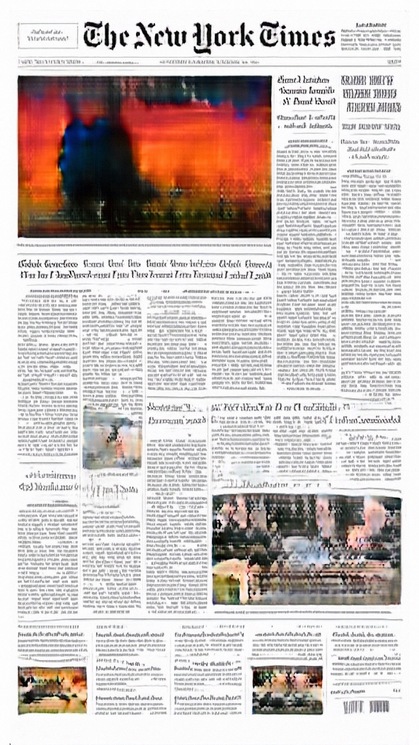-
From Current Issue
-
- Editor’s Letter Fire in the Heart
- Reviews I Gusti Ayu Kadek Murniasih
- Reviews 11th Seoul Mediacity Biennale: “One Escape at a Time”
- Dispatch Networked China
- One on One Monira Al Qadiri on Yukio Mishima
- Essays The rise of independent art spaces in pandemic-era Shanghai
- Features Tuan Andrew Nguyen
- Table of Contents
- Web Exclusives
- Archive
- Subscribe

R
E
V N
E
X
T
Installation view of SHI ZHENG’s Embers, 2017, digital video: 5 min 32 sec, at “Embers,” Migrant Bird Space, Berlin, 2019. All images copyright the artist; courtesy Migrant Bird Space.
In recent years, many artists have started to incorporate digital technologies such as artificial intelligence, machine learning, and data mining into their artistic practice. One approach in particular has been to use artificial neural networks, or a set of algorithms modelled on the human brain that are designed to recognize patterns from input data, as an artistic medium in order to explore, question, and even undermine human perception and the nature of reality. Significance lies in not merely the resultant digital artwork, but also the predictive process in which the machine “mind” both creates and interprets its own output.
Such interests inform the work of Chinese digital artist Shi Zheng, whose solo show “Embers” was hosted by Berlin’s Migrant Bird Space. Stepping out of the city’s radiant autumn sun and into the darkened gallery space was like entering an alternate reality, which in obvious and subtle ways simultaneously mirrored and diverged from our own.
For the multi-channel video installation Frosty Morning (2019), Shi had trained an artificial neural network to “read” the front page of the New York Times. Viewed from a distance, the work appears to show a series of the paper’s front pages, with different headlines, pictures, and text. Using an algorithm that gathered the previous six years’ worth of front-page content, Frosty Morning aims to predict “all the news that is fit to print” (per the paper’s motto)—and write it before it happens. Upon closer examination, one realizes that the paper is in fact unreadable and therefore unreliable: pictures and text mutate and the masthead is reversed. The experience of time, as measured by successive front pages, neither accelerates nor decelerates, but rather disintegrates entirely into an atemporal blur that undermines modernity’s insistence on chronological progress.
Shi pushes this idea to total abstraction in Frosty Morning BINE (2019), projected adjacent to its namesake and featuring bold, purplish and ocher-tinged, intersecting lines in a grid-like pattern. The lines and columns, which typically structure a broadsheet’s front page, are in Shi’s work the only visual cues suggestive of an actual newspaper as the medium becomes the message. Lines appear, disappear, and reappear, adding an uncanny organic quality to the inert raw material of data sets, neural networks, and algorithms.
The gallery’s lower floor contained Celestial Fable (2017) and the eponymous Embers (2017). Responding to Fluxus founding member Alison Knowles’s pioneering computer-generated poem “The House of Dust,” Shi’s Celestial Fable begins with a set of questions (What are its materials? When/where is it happening? How does it feel?), which form the basis for an artificial framework that inserts randomly generated, but grammatically appropriate, words into a series of quatrains. The result is an endless poem about a variety of natural phenomena. As in Frosty Morning, however, the intentional intermingling of the real and the virtual yields poetry that is mere simulacra. The poetic-seeming lines are largely devoid of meaning, which calls into question their relationship with the phenomenological world and overall value as poetic language.
Embers, Shi’s most visually arresting installation, immerses the viewer in a bleak and barren black-and-red landscape that is more lunar than earthly. At approximately five minutes in length, the video presents aerial views as well as separate parallel screens of computer-generated, photorealistic landscapes complemented by an ear-splitting audio track. Shi bifurcates time visually by juxtaposing slow-moving terrestrial landscapes with brisk-moving clouds, creating a disjuncture between the appearance and experience of time. Midway through the piece, a diaphanous blue sky emerges briefly before the landscape dissolves into separate horizontal planes of color reminiscent of Mark Rothko’s color field paintings. In the final segment, six asynchronous landscape snapshots flicker and fade into oblivion. It is an approximation of the sublime, and, indeed, a sublime approximation of the natural world.
To what extent, then, do Shi’s virtual worlds reflect a certain anxiety over technological determinism in today’s age of acceleration? Digital technology’s “otherworldliness” offers the promise of timeless connectivity, but such disembedded modes of existence run counter to our embodied experience of time. Whether Shi’s smoldering embers point the past or the future remains an open question.
Shi Zheng’s “Embers” is on view at Migrant Bird Space, Berlin, until October 18, 2019.
To read more of ArtAsiaPacific’s articles, visit our Digital Library.

















